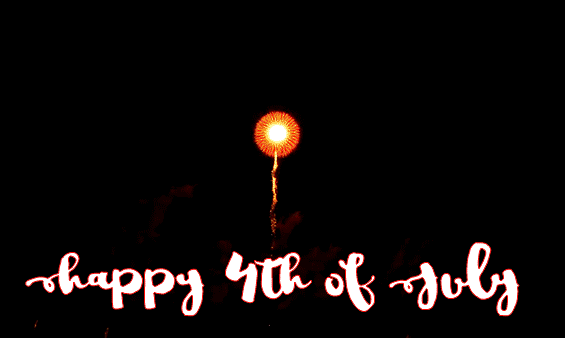Archive for June, 2019
Shame
Shame is self-bullying behavior. Shame can be toxic, and deadly.
“Shame is the most powerful, master emotion. It’s the fear that we’re not good enough.” ~Brene Brown
Shame is, “unpleasant self-conscious emotion typically associated with a negative evaluation of the self, withdrawal motivations, and feelings of distress, exposure, mistrust, powerlessness, and worthlessness….” (Wikipedia) I would add ‘inadequacy’ to the above definition.
Shame avoidance is common; we try to hide and conceal our shame, or escape it by shaming another person to relocate shame outside of our self.
For example, many people who are overweight in our svelte worshiping culture, often try to hide their shame with clothing, or by withdrawing from the social milieu. Conversely, they may engage in shaming thin people, projecting their shame outside of themselves.
The shame experience can trigger anger, activate abandonment fears and create unrealistic comparisons. Transferred toxic shame can make the recipient physically and emotionally ill.
It is important to distinguish shame from guilt, embarrassment and humiliation. Guilt is reacting to having done something bad, shame is the belief that we are bad. Embarrassment is feeling self-conscious, uneasy and awkward when committing a social faux pas or engaging in scandalous behavior that becomes public knowledge. Humiliation is disgrace, condescension, dishonor and shame.
Acknowledging our shame, working to understand our ‘inner life’ gifts us with an invaluable opportunity for achieving personal growth and psycho-spiritual maturation.
Working with shame requires us to recognize that we are not what we do. When our self-worth is attached to our roles as parents, daughters, sons, siblings, husbands or wives, artists, entrepreneurs, employees, scholars, etc., we will experience soul-devastation when things don’t go well.
“The underbelly of the human psyche, what is often referred to as our dark side, is the origin of every act of self-sabotage. Birthed out of shame, fear, and denial, it misdirects our good intentions and drives us to unthinkable acts of self-destruction and not-so-unbelievable acts of self-sabotage.” ~Debbie Ford
It is paramount when working with shame to be loving and compassionate to ourselves. Insecurities will arise, often when we are most vulnerable. Strive to identify the feelings behind them. Seek their origins and test them for their validity.
Move away from shame and toward embracing your authentic self, not the ‘who’ you think you are.
Blessings!
Treasure
There are many kinds of treasure, tangible and intangible. Wealth and riches, especially in the form of money, precious gems and precious metals, things that we value, are tangible forms of treasures.
Treasured relationships, spiritual strength, cultural heritage, a person who is greatly loved, respected or valued for their altruism and inspiration, these are examples of intangible treasures.
An article in The Press Democrat (Sunday June 9,2019) brought to my attention a treasure I didn’t know existed…The Windsor Historical Society’s museum. The story of the Hembree House where artifacts, and relics of this area’s rich history are on display, was so interesting. A photo of hand-carved wooden tools, created by the late George Greeott amazes and entices me to the museum to view his wood sculptures, described as excellent abstractions…”that possess a flowing, sinuous beauty.”
And the story of Fred Wiseman. He built his own biplane in a tent, practiced takeoffs and landings on the Laughlin Ranch, before flying the first air-mail letter ever, from Petaluma to Santa Rosa in 1911. His was also the first plane ever built in California.
Like our National, city and community parks, this historical museum and many others like them are true treasures.
This week I invite you to plan an outing to a local museum to relish the amazing treasures they preserve for our edification and enjoyment.
Forest Bathing
…or Shinrin-yoku is a form of nature or ecotherapy designed to improve a person’s mental and/or physical health specifically by spending time in wild nature settings. Developed in Japan in the 1980’s, it has become a model for helping to establish forest therapy throughout the world.
‘Why?’ you might ask, ‘is this movement growing in popularity.’ A compelling explanation can be found in “The Human Relation With Nature and Technological Nature” by Peter H. Kahn Jr., Rachel L. Severson and Jolina H Ruckert’s article which appeared in the Association for Psychological Science, 2009 Vol 18-Number 1. The authors discuss the pros and cons of the increasing reliance on technology as alternatives to physically being in nature’s wild places…which are becoming harder to access.
Watching Planet Earth, streaming nature videos, creating nature window screens, staring up at nature vignettes in a medical treatment or surgery prep room, reduce anxiety, create happier more productive work environments, and are soothing and restorative. But they are incomplete substitutes for the real thing.
When we sit quietly for 20-25 minutes in wild nature, our internal chatter shuts off allowing us to become part of the environment, not just observers. The natural world around us accepts our presence, and the interplay between the full cast and characters resumes. There is an energetic shift that is palpable; a kind of meditation that is immersed in awareness, mindfulness and wellness. We become an intrinsic part of the whole.
John Muir wrote, “Thousands of tired, nerve-shaken, over-civilized people are beginning to find out that going to the mountains is going home. Wilderness is a necessity.”
This week I invite you to bathe in the forest.
Blessings!
Retrograde
So many of us are feeling the unsettled energy of the cosmos, including myself. It feels like Mercury never came out of it’s March retrograde.
Curious, I checked the planetary patterns. Turns out there are five planets currently in retrograde, and Mercury isn’t one of them! Jupiter, Saturn, Uranus, Neptune and Pluto are the retrograding planets. Mercury will join them beginning July 9th.
The effects on us personally, vary depending on where these planets are in our natal chart. Retrogrades provide opportunity to reflect, examine and understand past experiences and make adjustments if necessary, leading to greater emotional and spiritual maturity.
If you have been feeling the out-of-sorts energy, I’m hoping that this insight will give you a better understanding of the current personal and planetary energetics.
Blessings!




